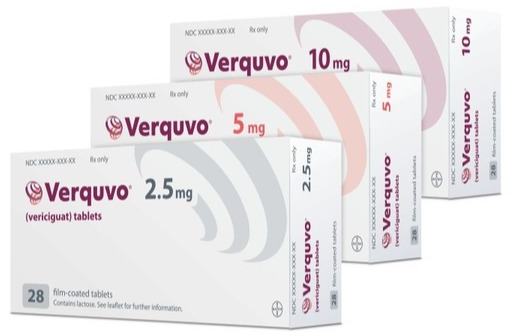Physicians are increasingly emphasizing the importance of managing heart failure (HF), the final complication of cardiovascular disease, and Bayer’s new treatment Verquvo (vericiguat), is drawing attention from the medical community.
According to the Korea Heart Failure Fact Sheet released by the Korean Society of Heart Failure in 2020, the HF prevalence in Korea went up from 0.77 percent in 2002 to 2.24 percent in 2018. It said that HF prevalence is expected to rise to 3.35 percent in 2040.

Usually, medication improves heart activity and relieves HF symptoms. However, in many cases, the heart function does not normalize and continues to deteriorate. About 56 percent of patients who experience an exacerbation of HF are readmitted within 30 days, and one in five die within two years.
Professor Kim Eung-joo at the Cardiovascular Center of Korea University Guro Hospital said it is most important for chronic HF patients to get a treatment that lowers the readmission rate and reduces the risk of death.
He said that chronic HF patients needed a new treatment option because some of them experience worsening symptoms despite treatment with existing drugs.
In 2021, the European Society of Cardiology announced new guidelines for HF diagnosis and treatment, recommending the optimal treatment after hospitalization for HF or HF exacerbation.
The guidelines recommended Verquvo for NYHA class II-IV patients with worsened HF despite treatment with ACEi (or ARNI), β-blocker, or MRA (mineralocorticoid receptor antagonist) to reduce the risk of death from cardiovascular disease and hospitalization for HF.
Verquvo won approval as the first soluble guanylate cyclase (sGC) stimulator that promotes the synthesis of cyclic guanosine monophosphate (cGMP) to treat symptomatic chronic HF.
While existing ACEi or β-blocker suppress the neurohormonal systems activated by myocardial and vascular dysfunction, Verquvo directly stimulates sGC to promote the synthesis of cGMP, which is important for normal heart and blood vessel function.
Verquvo with a new mechanism showed therapeutic effects when used in combination therapy in high-risk patients who did not respond to existing treatments in the VICTORIA study, which was the basis for approval in Korea.
The VICTORA trial was on 5,050 adults with symptomatic chronic HF in NYHA Class II-IV whose left ventricular ejection fraction (LVEF) was less than 45 percent after exacerbation of HF.
“What’s notable in VICTORIA is that the study included many high-risk chronic HF patients whose disease progressed despite conventional therapy and who were receiving proper treatment already,” Kim said.
The study results showed that Verquvo-treated patients had about 10 percent less risk of cardiovascular death or first hospitalization for HF, compared to the placebo group, during the median 10.8-month follow-up. In addition, the treatment group showed a 4.2 percent of annualized absolute risk reduction.
The annualized absolute risk reduction of hospitalization for HF was 3.2 percent.
The Verquvo-treated group showed a 10 percent risk reduction in death from any cause or hospitalization for HF.
In safety profiles, 9.1 percent of the Verquvo group and 7.9 percent of the placebo group reported symptomatic hypotension, but incidents of overall adverse events were similar between the two groups.
“Verquvo confirmed its effect on reducing the risk of cardiovascular death and hospitalization for HF in the study in high-risk patients. The treatment also demonstrated good safety results, although it was administered in combination with another drug,” Kim said. “For HF patients who used to be readmitted repeatedly because of lack of treatment, Verquvo is expected to become a new treatment option.”

